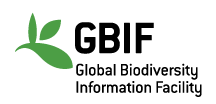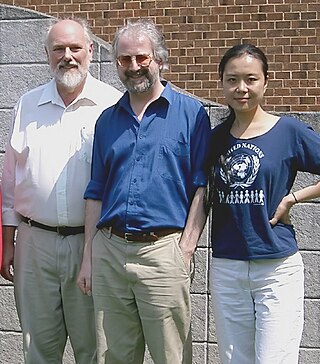Related Research Articles

The Convention on Biological Diversity (CBD), known informally as the Biodiversity Convention, is a multilateral treaty. The Convention has three main goals: the conservation of biological diversity ; the sustainable use of its components; and the fair and equitable sharing of benefits arising from genetic resources. Its objective is to develop national strategies for the conservation and sustainable use of biological diversity, and it is often seen as the key document regarding sustainable development.
In biology, taxonomy is the scientific study of naming, defining (circumscribing) and classifying groups of biological organisms based on shared characteristics. Organisms are grouped into taxa and these groups are given a taxonomic rank; groups of a given rank can be aggregated to form a more inclusive group of higher rank, thus creating a taxonomic hierarchy. The principal ranks in modern use are domain, kingdom, phylum, class, order, family, genus, and species. The Swedish botanist Carl Linnaeus is regarded as the founder of the current system of taxonomy, as he developed a ranked system known as Linnaean taxonomy for categorizing organisms and binomial nomenclature for naming organisms.

The Integrated Taxonomic Information System (ITIS) is an American partnership of federal agencies designed to provide consistent and reliable information on the taxonomy of biological species. ITIS was originally formed in 1996 as an interagency group within the US federal government, involving several US federal agencies, and has now become an international body, with Canadian and Mexican government agencies participating. The database draws from a large community of taxonomic experts. Primary content staff are housed at the Smithsonian National Museum of Natural History and IT services are provided by a US Geological Survey facility in Denver. The primary focus of ITIS is North American species, but many biological groups exist worldwide and ITIS collaborates with other agencies to increase its global coverage.
The Intergovernmental Oceanographic Commission of UNESCO (IOC/UNESCO) was established by resolution 2.31 adopted by the General Conference of the United Nations Educational, Scientific and Cultural Organization (UNESCO). It first met in Paris at UNESCO Headquarters from 19 to 27 October 1961. Initially, 40 States became members of the commission. The IOC assists governments to address their individual and collective ocean and coastal management needs, through the sharing of knowledge, information and technology as well as through the co-ordination of programs and building capacity in ocean and coastal research, observations and services.
The Consortium for the Barcode of Life (CBOL) was an international initiative dedicated to supporting the development of DNA barcoding as a global standard for species identification. CBOL's Secretariat Office is hosted by the National Museum of Natural History, Smithsonian Institution, in Washington, DC. Barcoding was proposed in 2003 by Prof. Paul Hebert of the University of Guelph in Ontario as a way of distinguishing and identifying species with a short standardized gene sequence. Hebert proposed the 658 bases of the Folmer region of the mitochondrial gene cytochrome-C oxidase-1 as the standard barcode region. Hebert is the Director of the Biodiversity Institute of Ontario, the Canadian Centre for DNA Barcoding, and the International Barcode of Life Project (iBOL), all headquartered at the University of Guelph. The Barcode of Life Data Systems (BOLD) is also located at the University of Guelph.

The Global Biodiversity Information Facility (GBIF) is an international organisation that focuses on making scientific data on biodiversity available via the Internet using web services. The data are provided by many institutions from around the world; GBIF's information architecture makes these data accessible and searchable through a single portal. Data available through the GBIF portal are primarily distribution data on plants, animals, fungi, and microbes for the world, and scientific names data.
Biodiversity informatics is the application of informatics techniques to biodiversity information, such as taxonomy, biogeography or ecology. It is defined as the application of Information technology technologies to management, algorithmic exploration, analysis and interpretation of primary data regarding life, particularly at the species level organization. Modern computer techniques can yield new ways to view and analyze existing information, as well as predict future situations. Biodiversity informatics is a term that was only coined around 1992 but with rapidly increasing data sets has become useful in numerous studies and applications, such as the construction of taxonomic databases or geographic information systems. Biodiversity informatics contrasts with "bioinformatics", which is often used synonymously with the computerized handling of data in the specialized area of molecular biology.
The World Geographical Scheme for Recording Plant Distributions (WGSRPD) is a biogeographical system developed by the international Biodiversity Information Standards (TDWG) organization, formerly the International Working Group on Taxonomic Databases. The WGSRPD standards, like other standards for data fields in botanical databases, were developed to promote "the wider and more effective dissemination of information about the world's heritage of biological organisms for the benefit of the world at large". The system provides clear definitions and codes for recording plant distributions at four scales or levels, from "botanical continents" down to parts of large countries. The codes may be referred to as TDWG geographical codes. Current users of the system include the International Union for Conservation of Nature (IUCN), the Germplasm Resources Information Network (GRIN), and Plants of the World Online (POWO).
The Access to Biological Collections Data (ABCD) schema is a highly structured data exchange and access model for taxon occurrence data, i.e. primary biodiversity data.
The Zoological Record (ZR) is an electronic index of zoological literature that also serves as the unofficial register of scientific names in zoology.
Darwin Core is an extension of Dublin Core for biodiversity informatics. It is meant to provide a stable standard reference for sharing information on biological diversity (biodiversity). The terms described in this standard are a part of a larger set of vocabularies and technical specifications under development and maintained by Biodiversity Information Standards (TDWG).
A taxonomic database is a database created to hold information on biological taxa – for example groups of organisms organized by species name or other taxonomic identifier – for efficient data management and information retrieval. Taxonomic databases are routinely used for the automated construction of biological checklists such as floras and faunas, both for print publication and online; to underpin the operation of web-based species information systems; as a part of biological collection management ; as well as providing, in some cases, the taxon management component of broader science or biology information systems. They are also a fundamental contribution to the discipline of biodiversity informatics.
Plazi is a Swiss-based international non-profit association supporting and promoting the development of persistent and openly accessible digital bio-taxonomic literature. Plazi is cofounder of the Biodiversity Literature Repository and is maintaining this digital taxonomic literature repository at Zenodo to provide access to FAIR data converted from taxonomic publications using the TreatmentBank service, enhances submitted taxonomic treatments by creating a version in the XML format Taxpub, and educates about the importance of maintaining open access to scientific discourse and data. It is a contributor to the evolving e-taxonomy in the field of Biodiversity Informatics.
The International Organization for Biological and Integrated Control (IOBC), is an organization, affiliated with the International Union of Biological Sciences (IUBS), organised to promote and study biological pest control, integrated pest management (IPM) and integrated production.

Frank Ainley Bisby was a botanist who specialized in legumes, and was a pioneer in the development of taxonomic databases. He is noted for his work in founding Species 2000 in 1997, which coordinated the publication of the Catalogue of Life, the most comprehensive catalogue of species. Bisby was the first chair of the Taxonomic Database Working Group (TDWG), which was founded in 1985. Bisby continued to lead significant projects, including the International Legume Database and Information Service (ILDIS). He served as a professor of botany at the University of Reading for most of his career.

Eastern Asia is one of the regions of temperate Asia defined in the World Geographical Scheme for Recording Plant Distributions (WGSRPD) for use in recording the distribution of plants. It is very much smaller than common definitions of East Asia. It consists of the Korean Peninsula, Japan, and Taiwan. Some islands belonging to Japan politically, such as Marcus Island (Minami-Tori-shima), have greater floristic affinity with similar Pacific islands and are placed in the botanical continent of the Pacific.
Plinian Core is a set of vocabulary terms that can be used to describe different aspects of biological species information. Under "biological species Information" all kinds of properties or traits related to taxa—biological and non-biological—are included. Thus, for instance, terms pertaining descriptions, legal aspects, conservation, management, demographics, nomenclature, or related resources are incorporated.

Anthony J. J. ("Tony") Rees is a British-born software developer, data manager and biologist resident in Australia since 1986, and previously a data manager with CSIRO Marine and Atmospheric Research. He is responsible for developing a number of software systems currently used in science data management, including c-squares, Taxamatch, and IRMNG, the Interim Register of Marine and Nonmarine Genera. He has also been closely involved with the development of other biodiversity informatics initiatives including the Ocean Biogeographic Information System (OBIS), AquaMaps, and the iPlant Taxonomic Name Resolution Service (TNRS).
Richard Kenneth "Dick" Brummitt was a British botanist.
References
- 1 2 3 "TDWG History". TDWG. Archived from the original on 2017-08-03. Retrieved 2016-12-07.